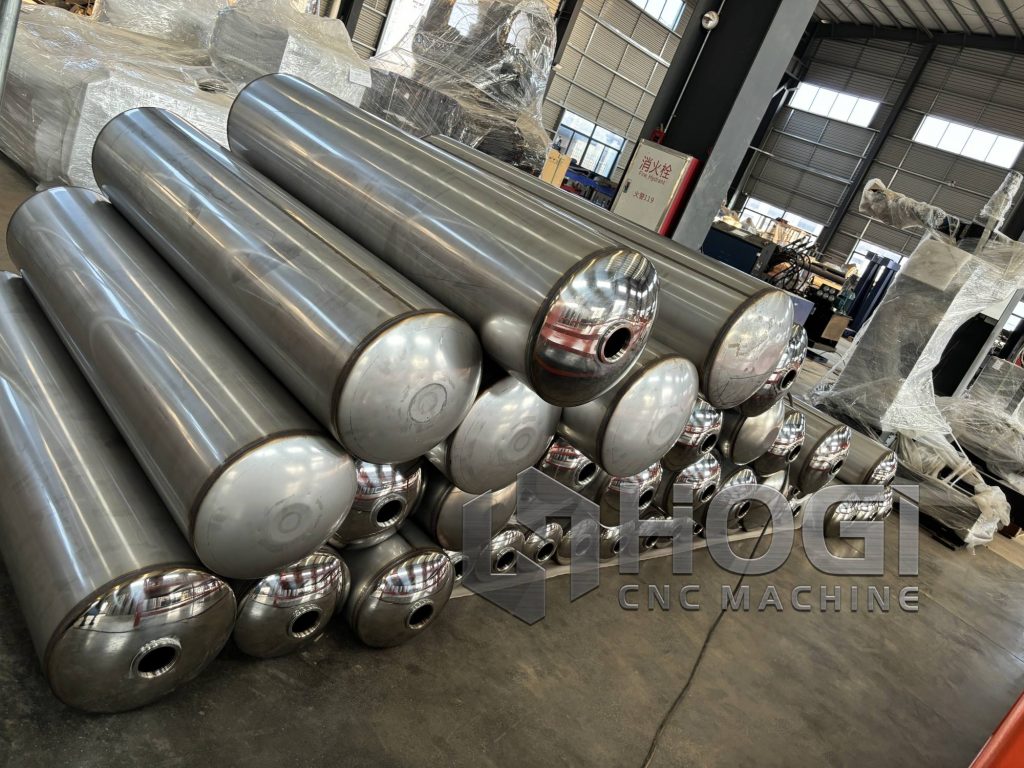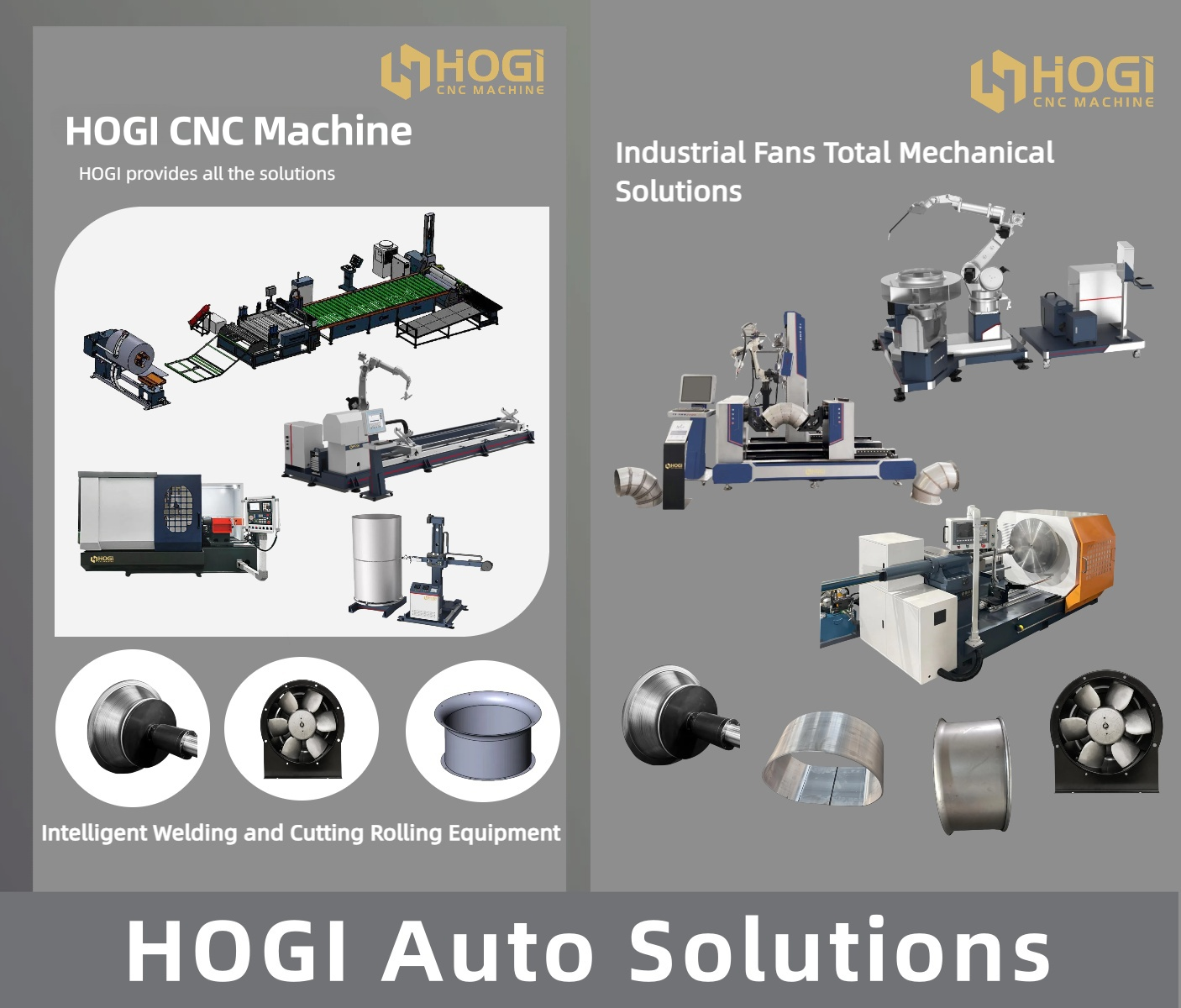Highly efficient and accurate automatic circumferential welding technology improves welding quality and work efficiency.
Circular seam welding refers to the welding of various circular rings and ring-shaped structures. The weld seam formed after welding is a closed circular ring shape, and it is widely applied in tube-to-tube welding, tube-to-plate welding, and tube-to-flange welding, among others; Circumferential welding can be classified into vertical circumferential welding and horizontal circumferential welding based on the position and angle of the weld seam. Vertical circumferential welding involves welding a ring-shaped joint perpendicular to the radial direction of the pipe fitting, such as the butt welding of vertically placed pipes. Horizontal circumferential welding involves welding a ring-shaped joint with the pipe fitting placed horizontally along the radial direction, such as the butt welding of horizontally placed pipes.
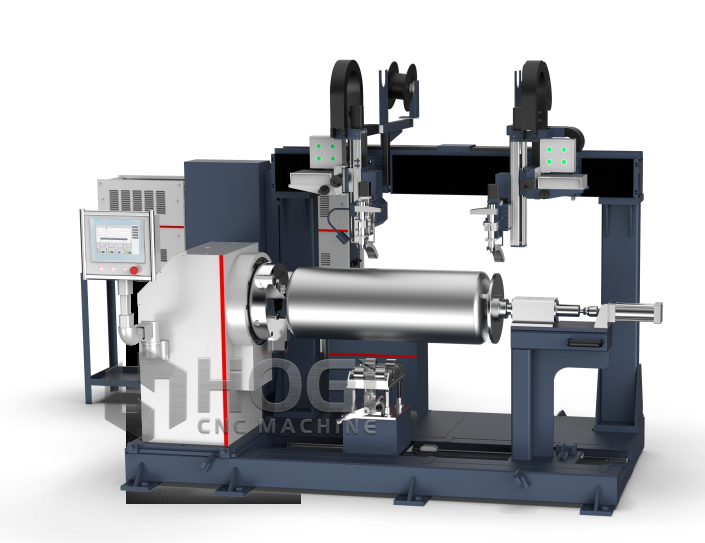
Automatic circumferential welding technology is performed using automatic circumferential welding equipment to achieve circular or ring-shaped welds. It is suitable for high-quality welding of materials such as carbon steel, stainless steel, and titanium alloys, and can be configured with welding power sources such as TIG welding (with or without filler wire), gas-shielded metal arc welding, and plasma welding to form a complete circumferential automatic welding system. It can be widely applied to the welding of products such as hydraulic cylinders, air tanks, chemical and medical containers, liquefied gas cylinders, drums and storage tanks used in mining and production lines, and more.
Ring seam automatic welding equipment can be broadly categorized based on the shape and size of the processed items, as well as the angle of the weld seam, into the following types: vertical ring seam automatic welding machines, horizontal ring seam automatic welding machines, welding positioners, welding centers, and contour-following ring seam automatic welding machines. The structure primarily consists of components such as the machine frame, rotating mechanism, flipping mechanism, electrical conductive devices, and electrical control systems. Automatic ring seam welding machines from different manufacturers may have slight differences. HOGI’s specialized automatic ring seam welding machines are custom-designed according to customers’ actual needs, offering comprehensive welding technical support services throughout the pre-sales, sales, and post-sales processes, as well as turnkey projects on a one-to-one basis.
Automatic Circumferential Seam Welding Machine
This automatic circumferential seam welding machine is suitable for welding circumferential seams on cylinders, oil cylinders, and other containers. It can weld a variety of materials, including mild steel and austenitic stainless steel, and can handle a variety of circumferential seam patterns. This machine has a small footprint, high weld quality, and a wide range of applications.
Technical Advantages
Suitable for welding circumferential seams on various workpieces, including cylinders, oil cylinders, and other containers.
It can weld materials such as mild steel, austenitic stainless steel, titanium alloys, and aluminum alloys. It can weld flanges, end caps, and pipe-to-pipe joints. It can be equipped with pneumatic loading, hydraulic tightening, and other fixtures to suit product characteristics.
Application Case | Hogi Weld Seam Tracking System – Circumferential Welding. Based on 3D laser seam tracking sensors, we provide solutions including sensors and specialized welding machines.
01 Introduction to Circumferential Welding
Circumferential weld welding involves welding various circular and annular welds. The resulting weld is a closed circular ring.
Vertical Circumferential Welding: A weld is primarily vertical and is welded in all positions. For example, welding fixed or rotatable joints on horizontal pipes is a vertical circumferential weld.
Horizontal Circumferential Welding: A weld is horizontal and is welded in all positions. For example, welding joints on vertical pipes is a horizontal circumferential weld.
02 Welding Characteristics
·The workpiece is circular, making it difficult to flip
·The distance between the welding gun and the workpiece surface is difficult to control, making continuous welding impossible
·The workpiece is prone to deformation, making weld quality difficult to ensure
03 Project Requirements
Targeting the specific characteristics of girth seam welding, HOGI developed a 3D sensor-based tracking system for girth seam welding.
This system utilizes a dual-head welder, allowing for adjustable spacing based on actual conditions and compatibility with workpieces of varying lengths. It also includes a welding process database, reducing the user’s PLC development workload.
04 Functional Benefits
The Hogi girth seam machine utilizes the latest series of weld tracking systems, supporting real-time laser tracking for automatic girth seam welding. It utilizes PLC-based automatic control and features a simple, user-friendly interface with one-button operation.
This system enables multi-layer automatic welding, with the welding torch automatically raising and lowering the arc without stopping. This significantly improves weld quality, reduces welder workload, and increases productivity.
The workpiece used in this case is a girth seam. The system utilizes an intelligent photoelectric sensor, is compact, minimizes workpiece interference, and features a built-in air-cooling air knife design, ensuring long-term stable operation.
05 Sensor Details
The FV-160 series weld seam tracking system is a set of laser sensors and supporting software designed to address the characteristics of MIG welding, such as large workpieces, frequent interference, large grooves, and large deviations.
06 Sensor Features
High-Resolution Series Weld Seam Tracking System,High resolution, up to 0.08mm,Large field of view, up to 100mm x 130mm detection range,High detection speed, standard models range from 20Hz to 50Hz, meeting high-speed welding tracking requirements of 2 meters per second
Multiple operating modes, including positioning, tracking, and scanning-before-welding Compatible with over 40 brands of specialized welding machines and robotic systems
High mounting height, up to 160mm, reduces unnecessary interference
Built-in air cooling system ensures long-term stable operation,Built-in air knife system extends the life of the protective glass and reduces smoke interference,Built-in controller ensures a simple and reliable system,Built-in 16-128GB of internal memory enables quality tracking and traceability
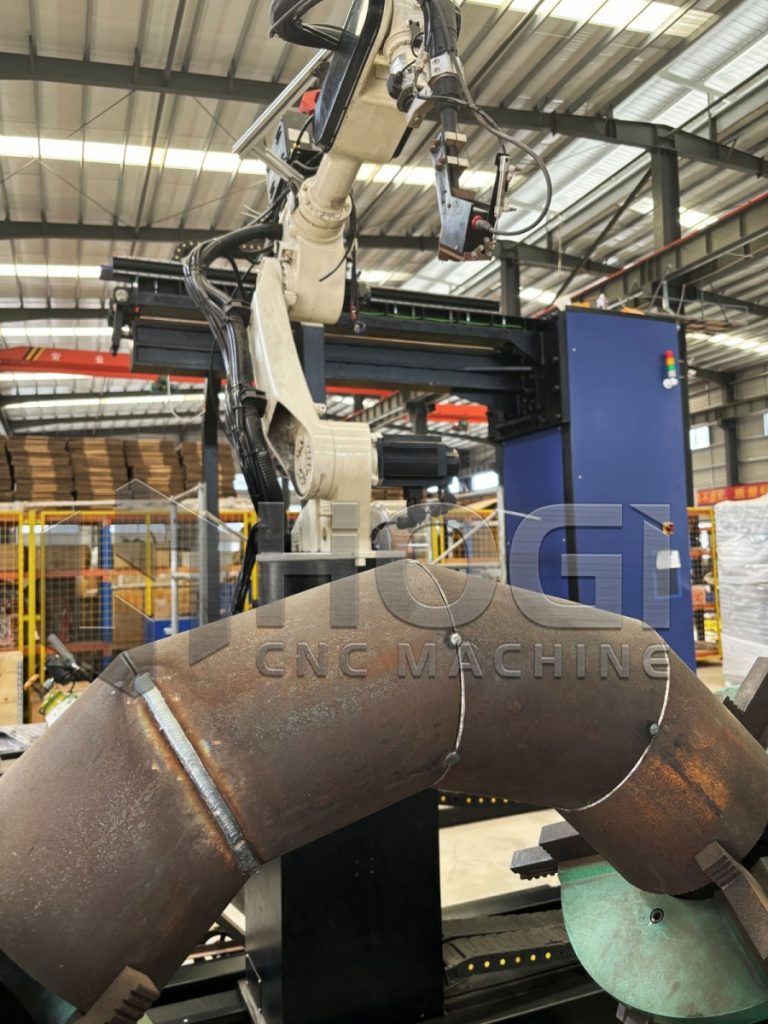
Hogi specializes in 3D laser seam tracking sensors, providing customers with sensing and robotics industry solutions, complete welding machine system solutions, and parametric/programmable welding and cutting solutions (weld seam tracking, weld guidance, weld inspection, laser positioning, weld positioning, tracking positioning, weld correction, and laser vision).
Circumferential seam welding is typically performed using a variety of welding processes. The following are some common ones:
1. Manual arc welding: This is a more traditional welding method in which the heat generated by the arc melts and fuses the welding rod and workpiece together. It is suitable for welding circumferential seams on a variety of materials and offers advantages such as high flexibility and simple equipment. However, the quality of manual arc welding depends on the welder’s skill level and welding efficiency is relatively low.
2. Submerged arc welding: The welding wire is buried under a layer of flux and the heat generated by the arc is used to weld. Submerged arc welding offers high welding speed, high weld quality, and beautiful weld formation, making it suitable for circumferential seam welding in large-scale production. However, submerged arc welding requires specialized equipment and flux, and has high requirements for weld assembly.
3. Tungsten inert gas welding (TIG welding): A tungsten electrode is used, and argon gas protects the weld area to prevent oxidation and contamination. TIG welding is suitable for welding high-quality materials such as stainless steel and aluminum alloys, and produces high-quality welds with minimal distortion. However, TIG welding is slow and expensive.
4. Metal Inert Gas Welding (MIG): A continuously fed wire serves as the electrode, while a shielding gas (such as carbon dioxide or argon) protects the weld area. MIG welding offers advantages such as high welding speed, high efficiency, and low cost, making it suitable for welding materials such as ordinary carbon steel and low-alloy steel. However, special shielding gases are required for some easily oxidized materials.
5. Plasma arc welding: This method utilizes a plasma arc as a heat source, offering concentrated energy, high temperatures, and fast welding speeds. Plasma arc welding is suitable for welding thin materials and high-precision circumferential seams, such as in aerospace components. However, plasma arc welding equipment is complex and expensive.
6. Laser welding: This method utilizes a high-energy-density laser beam, offering high welding speeds, a minimal heat-affected zone, and high weld quality. Laser welding is suitable for welding high-precision, high-demand circumferential seams, such as in electronic components and automotive parts. However, laser welding equipment is expensive and requires high operator skill.
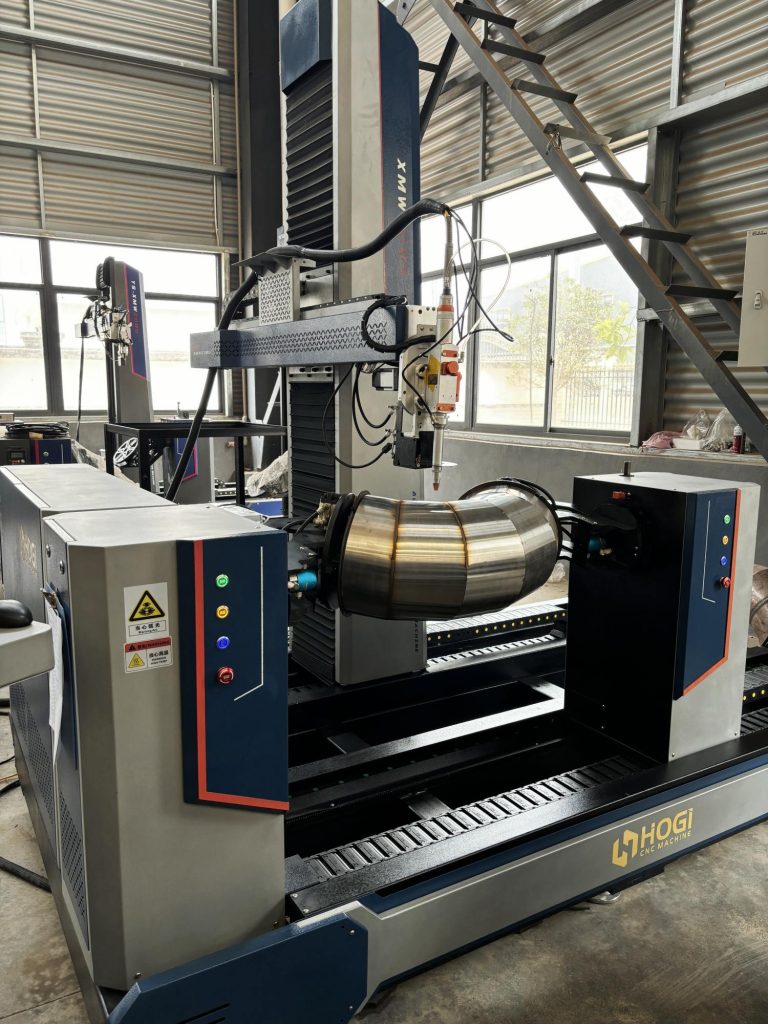
In practical applications, the appropriate welding process is selected based on factors such as the material, thickness, shape, and production batch size of the welded component. Sometimes, a combination of multiple welding processes is used to achieve better welding results.
After automatic circumferential welding, the weld seam can be inspected from the following aspects:
1. Visual quality inspection: smooth surface, smooth transition, and no surface welding defects;
2. Radiographic testing: Conduct finished product inspections in accordance with radiographic testing procedures and standards, with Grade III generally considered acceptable. The actual radiographic testing results must achieve a 100% pass rate, with a Grade I film rate of 98%.
3. Destructive testing: Generally, hydrostatic burst testing or mechanical property testing is conducted, with testing and qualification determination based on the testing methods and items specified in national standards for welded joint testing.
The application of automatic circumferential welding technology is extremely widespread, enabling efficient and precise welding across various industries. The primary advantages of this technology include:
1. Improved work efficiency: Automatic circumferential welding equipment can perform continuous, high-speed welding operations, significantly improving work efficiency compared to manual welding.
2. Ensuring welding quality: Automatic circumferential welding equipment has highly consistent welding parameters and operational precision, ensuring consistent welding quality in each weld and reducing the occurrence of welding defects.
3. Reducing labor costs: Automatic circumferential welding equipment reduces the need for manual operation, thereby lowering labor costs and avoiding welding quality issues caused by improper operation.
4. Enhancing safety: Automatic circumferential welding equipment eliminates the risk of personal injury during welding operations, thereby improving the safety of the welding process.
5. Applicable to various materials and products: Automatic circumferential welding technology can be applied to the welding of various materials such as carbon steel, stainless steel, and titanium alloys, as well as different types of products including hydraulic cylinders, air tanks, chemical containers, and liquefied gas cylinders.
In summary, automatic circumferential welding technology is characterized by high efficiency, precision, and reliability, which can improve welding quality and work efficiency, reduce costs, and enhance safety. This makes it widely used in modern manufacturing, and with the continuous development of technology, automatic circumferential welding technology will continue to be further improved and innovated.
